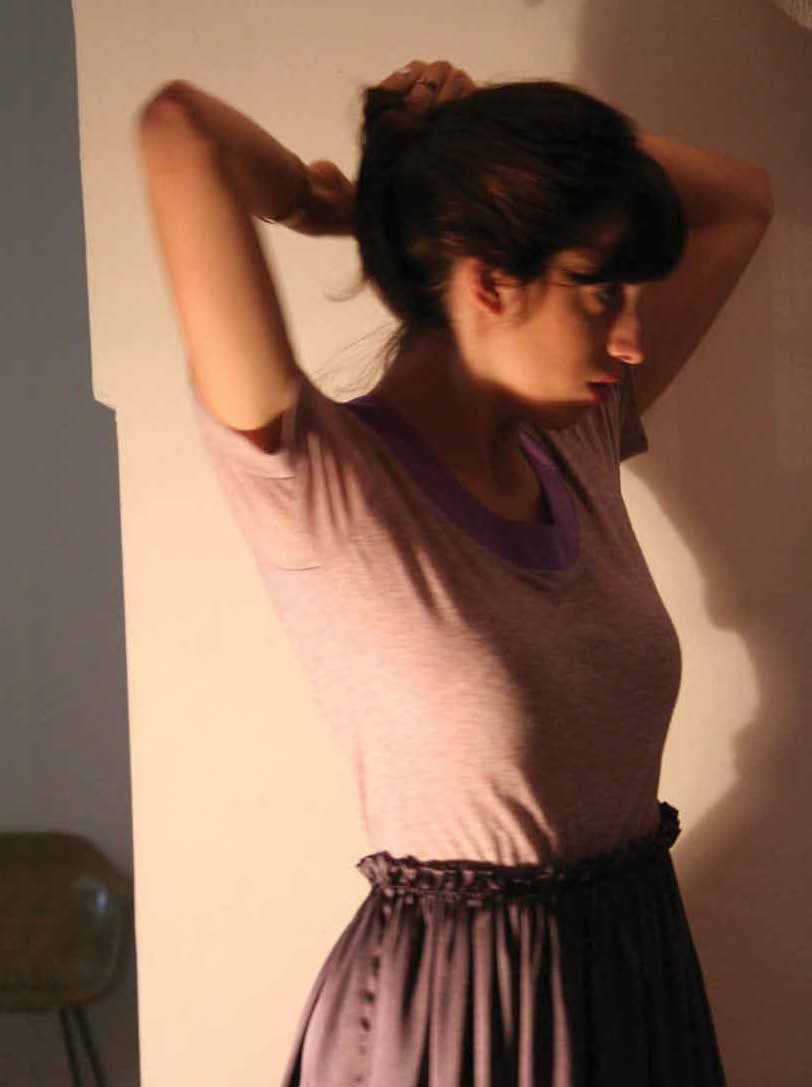Getting Dressed
Fashion is a completely delightful obsession for my cohort of 20-something women. It’s an in-your-face reclamation of the joy of clothes, putting the femme in feminism, so to speak. We do our research online, scrolling through endless pages of red carpets and runways — it’s easy and satisfying to be an armchair expert.
Part of me loves this—the rising trend of trendiness as a totally legit preoccupation, an art form, in fact. No more hiding the fact that you tweeze, wax, shave, and covet the perfect little black dress that you noticed in the window of that adorable boutique down the street from your non-profit. We all care what we look like, right? So why not run with it? I already hem and haw in front of my closet every sleepy-eyed morning, and it’s only fun when I like what I see on the hanger, and then in the mirror. (My personal mantra is entitled: “Boots and Tights” and it goes something like this: “Boots and tights, boots and tights, boots and tiiiights!” It works every time.)
We don’t have to look at self-fashioning as an oppressive, retrograde chore that makes us look like we have bad politics. Instead, why not think of the precarious art of self-maintenance as an indulgence and a privilege?
After all, there are so many options for women’s self-presentation (at least for a privileged segment of female society). When we dress up, or dress schlumpy, or dress as if we were still at Habonim camp, we already know we’re making a statement , performing some kind of female identity. And it seems to me that the by-now-duh notion that gender is constructed, performed, cultural, etc., is so Anthro 101 (no longer just Women’s Studies 101) that the doors are open for women to actually enjoy the process of feminine self-presentation. More like, “I get to put on this sparkly gold sweater/bright red lipstick/soft wool minidress/what have you.”
On the other hand (why should we be free to be unambivalent, after all?), this fun with femmey fashion has a darker side. Author Stephanie Coontz has been making the TV rounds exposing what she calls the “hottie mystique,” the idea that “young women have to not only achieve in ways you were never expected to achieve before, but to compensate for that achievement they must show that they are completely hot, sexual and desirable.” Marjorie Ingall, over at the online magazine Tablet, is also a skeptic: “We may tell our girls to be strong, faithful, brave, and smart, but the overarching message they get is that beauty trumps all else.” Sure, I genuinely love my mani-pedi—it makes me feel sharp, together, and yes, empowered. But that’s $40 I could spend on a subscription to The Economist, an hour I could spend getting ahead on evermounting deadlines or fomenting the revolution. Is that a choice most men ever even think about? I often deeply resent the time and energy it takes to maintain some arbitrary threshold I made up called “It’s OK to go grocery shopping in this outfit.” What’s the hidden cost of prioritizing prettiness?
Still, I know I feel much braver and more adventurous, more willing to step out of my comfort zone throughout the day, when I feel put-together pretty (enough). More vaudeville than Vogue, more burlesque than bourgeois, acknowledging this frees me up to embrace some traditionally feminine aesthetic practices. And for me, at least for now, thinking about the presentation of femininity as “play” on a grand scale — that’s what makes fashion feel like an art, rather than a burden.
Sonia Isard is Lilith’s assistant editor


